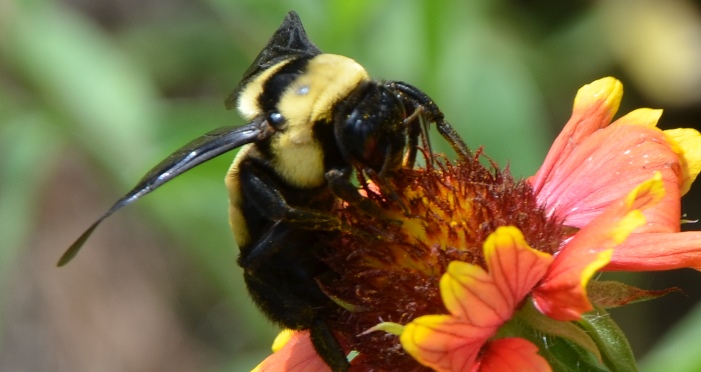Arbors decks eaves fascia boards gates patio furniture pergolas porch ceilings posts siding and window trim are all suitable sites.
Carpenter bees pollen siding.
Larvae to feed on and then seals them all off to ensure it s development.
Carpenter bees as pollinators eat nectar and pollen from flowering plants.
Exterior stains with certain chemical additives can deter carpenter bees.
The female carpenter bee bores a channel or main corridor in wood from 6 to as long as 4 feet to lay their eggs in divided areas called galleries or cells.
Carpenter bees prefer to excavate their nests in soft unpainted wood such as the back side of fascia boards siding window trim and porch ceilings.
They make holes in siding soffits decks posts and the painted or bare wood of barns and sheds especially when the paint is old hottel says.
Unpainted or stained cedar cypress and redwood shingles and siding are also attacked despite their pest resistant reputations.
This becomes a chamber where the female lays eggs leaves a food ball of pollen and then seals the chamber.
It sounds like this might be happening at your house.
The carpenter bees will excess feces and leave yellow stain.
Instead they burrow into soft woods such as the siding of a house to live in and lay larvae.
A closer look at a hole in wood shows carpenter bee inside.
Carpenter bees like their distant relatives the carpenter ants differ from termites in that they do not eat wood as food.
If you wonder the yellow stains around your living space it might be another sign of carpenter bees infestation.
As it is their primary food source you can also detect the sign by it.
Once the cell is ready the mother provisions each one with a platform of pollen and nectar called a pollen loaf upon which a single egg is laid.
Carpenter bees crawl between cracks in siding and roofing where they bore holes about 1 2 inch wide and 1 or 2 inches long.
They simply excavate tunnels for nesting sites.
Common carpenter bee nesting sites include eaves rafters fascia boards siding wooden shake roofs decks and outdoor furniture.
They have even been found making holes in wooden.
Painted or pressure treated wood is much less susceptible to attack.
The carpenter bee the carpenter bee is so called because of where it chooses to make it s home.
If you read through our carpenter bee control article you ll learn these bees will readily crawl under siding and facia boards to drill nests which will then effectively be hidden and secure.

